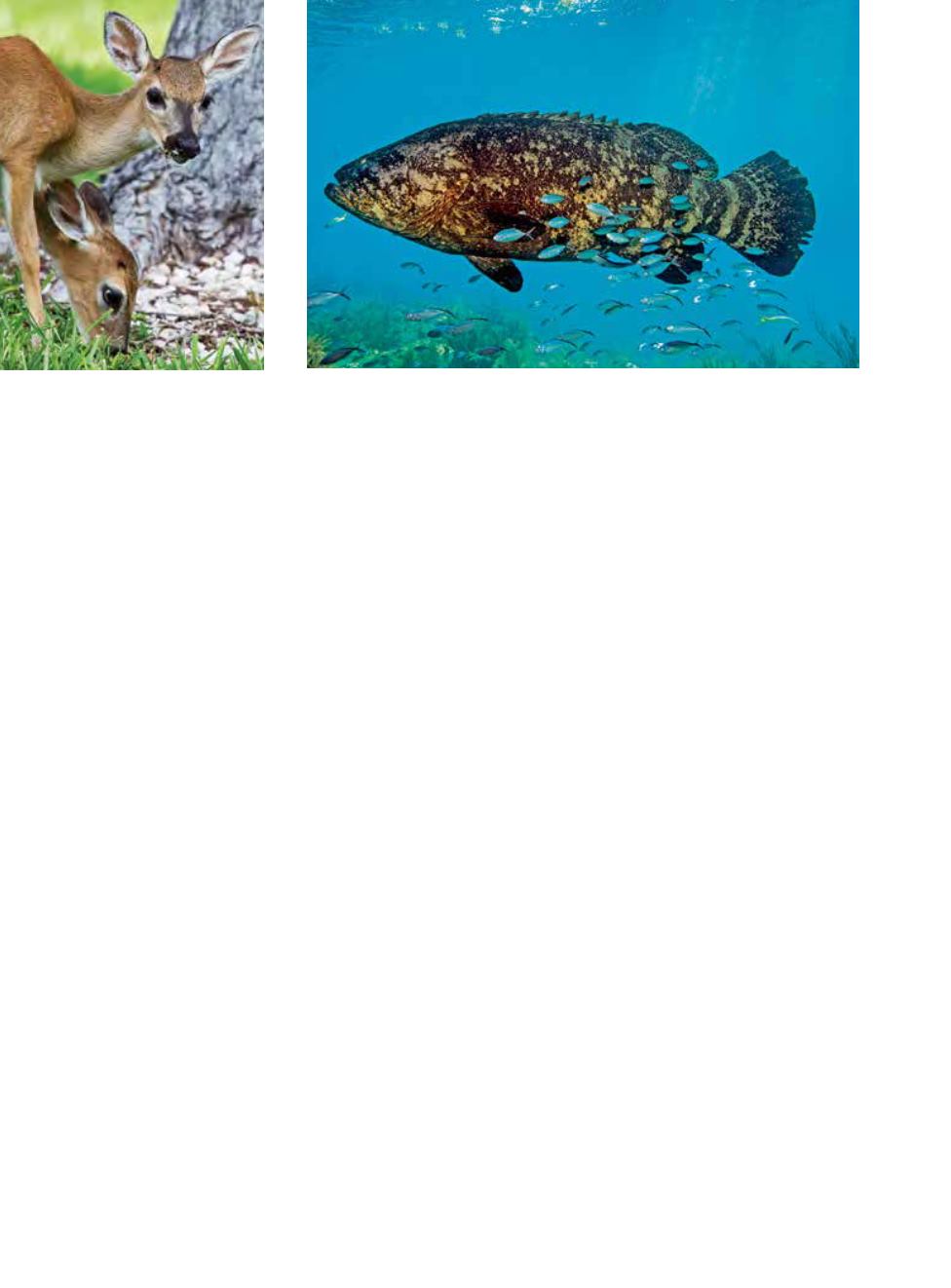
78
|
FALL 2014
ball of silversides attempting to hide inside the bow.
Predators are everywhere, fat, happy and toying with
the million-minnow meal at their leisure. At least two
dozen black groupers lurk in the shadows, ambushing
the minnows from below while bar jacks and yellowtails
strike from above. The frenzy has everything agitated;
even green morays are swimming in the open. When
I finally climb back aboard, Anna and Quinn are still
talking about their adventure.
“Tell Papa what you saw, Quinn.”
“A manta,” he chirps with a grin as big as the Benwood.
“Where?” I ask, a bit uncertain he actually made such
a rare sighting.
“Off the bow, not far from where you were
photographing the minnows,” Quinn replies. “I
pointed it out to my instructor and the lady with us.
They saw it, too.”
“Can you believe it?” Anna adds as she switches tanks.
“That’s some impressive fish to add to your list.”
To help Quinn become acquainted with the wildlife,
we suggested that he write down the names of fish
species he sees during the trip. Counting the manta,
he added six new names to the list on the Benwood
including the green morays, tarpon and, of course, the
gang of well-fed black grouper. We’ve also scheduled
several shore visits during our stay to learn about other
facets of the underwater world and to become familiar
what is being done to protect marine creatures and
the environment.
AN UNDERWATER HOTEL
That afternoon we pull into a parking area next to a
mangrove lagoon, the home of the
Jules’ Undersea
Lodge
, for a tour of the world’s only underwater hotel.
The submerged habitat, which can sleep six aquanauts,
started its operational life in the early 1970s perched on a
60-foot sand shelf off Puerto Rico, where it served as one
of the earliest underwater research labs. Quinn and I slip
on scuba tanks and navigate a circuitous route across the
lagoon. Waylaid by a contingent of shallow-water fish,
we arrive late, but we add five more species to the list.
For decades I’ve heard about the exploits of aquanauts
living beneath the sea, occasionally for months at a
time. Even with all my reading I had no sense of the
intrigue involved until I popped up through the moon
pool inside the habitat’s wet room. This and the three
attached rooms, kept from flooding by a constant flow
of compressed air, are stark but well appointed. A pair
of round 42-inch windows dominates the space with a
warm yellow-green glow and views of passing fish.
SEVEN MILES OF BRIDGE
The following morning we leave Key Largo early for
a 77-mile drive to Big Pine Key — the home of
Looe
Key Reef
and a gem of a place to dive. Our two-hour
drive carries us over much of the Overseas Highway
— a destination in its own right. At the start, along the
upper Keys, the sea is nowhere to be seen, but as we
continue southwest the bridges separating the Atlantic
from Florida Bay become longer and longer until soon
we’re surrounded by water. Bridge after bridge crosses
a balmy blue world punctuated with boats and islands.
By the time we reach the famous Seven-Mile Bridge on
the south end of Marathon, it is easy to believe that the
Earth’s surface really is seven-tenths water.
The Seven-Mile Bridge runs parallel to an old railroad
trestle — a remnant of the first land connection between
the mainland and Key West. The ocean-going extension
of the Florida East Coast Railway, dubbed “Flagler’s Folly”
at the expense of tycoon Henry Flagler, who single-
handedly financed the ill-fated enterprise, laid its first
track in 1905. Completed in 1912, trains ran the line for
22 unprofitable years before receiving a knockout blow
from the Labor Day Hurricane of 1935. With no appetite


